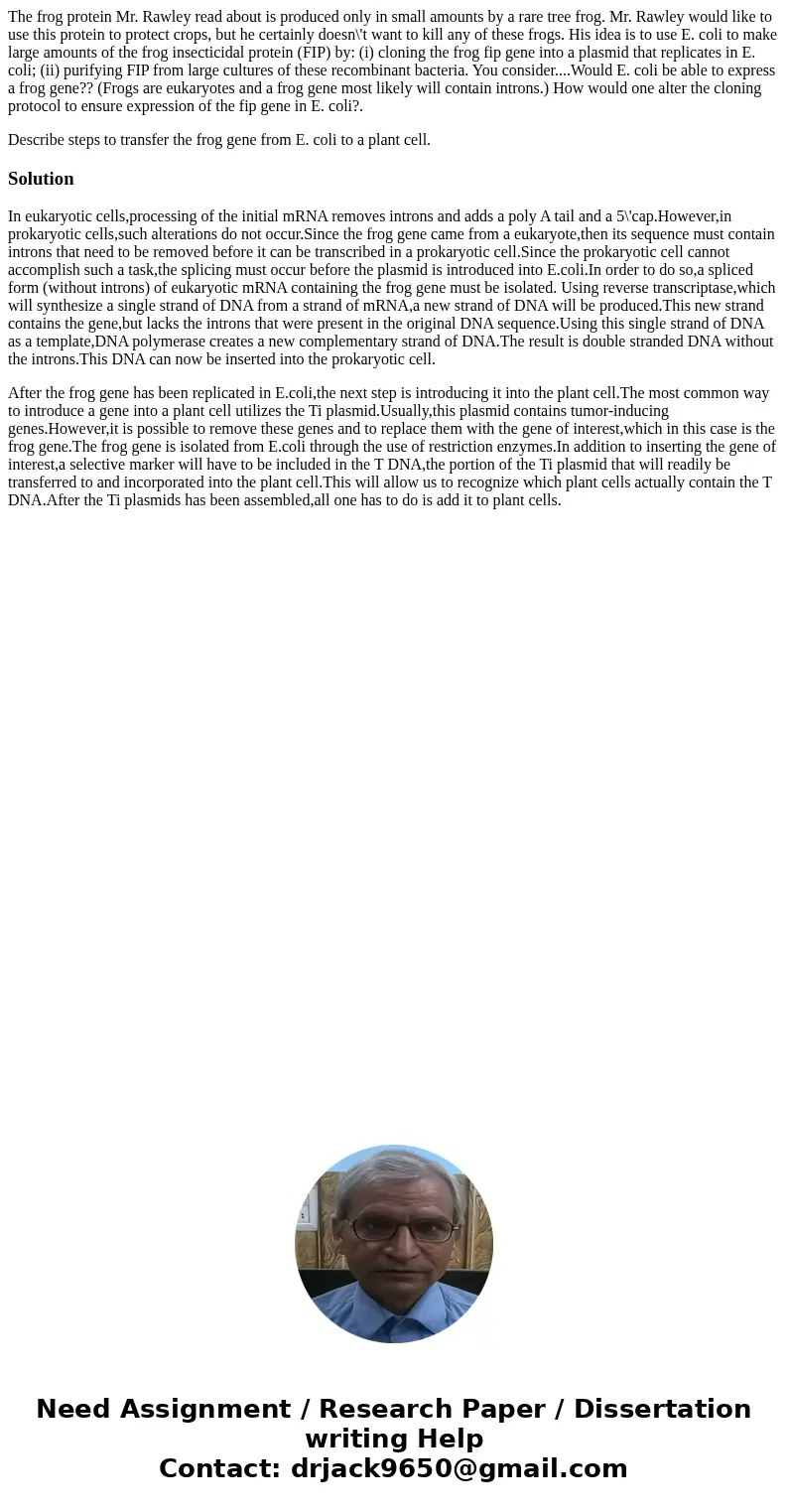The frog protein Mr Rawley read about is produced only in sm
The frog protein Mr. Rawley read about is produced only in small amounts by a rare tree frog. Mr. Rawley would like to use this protein to protect crops, but he certainly doesn\'t want to kill any of these frogs. His idea is to use E. coli to make large amounts of the frog insecticidal protein (FIP) by: (i) cloning the frog fip gene into a plasmid that replicates in E. coli; (ii) purifying FIP from large cultures of these recombinant bacteria. You consider....Would E. coli be able to express a frog gene?? (Frogs are eukaryotes and a frog gene most likely will contain introns.) How would one alter the cloning protocol to ensure expression of the fip gene in E. coli?.
Describe steps to transfer the frog gene from E. coli to a plant cell.
Solution
In eukaryotic cells,processing of the initial mRNA removes introns and adds a poly A tail and a 5\'cap.However,in prokaryotic cells,such alterations do not occur.Since the frog gene came from a eukaryote,then its sequence must contain introns that need to be removed before it can be transcribed in a prokaryotic cell.Since the prokaryotic cell cannot accomplish such a task,the splicing must occur before the plasmid is introduced into E.coli.In order to do so,a spliced form (without introns) of eukaryotic mRNA containing the frog gene must be isolated. Using reverse transcriptase,which will synthesize a single strand of DNA from a strand of mRNA,a new strand of DNA will be produced.This new strand contains the gene,but lacks the introns that were present in the original DNA sequence.Using this single strand of DNA as a template,DNA polymerase creates a new complementary strand of DNA.The result is double stranded DNA without the introns.This DNA can now be inserted into the prokaryotic cell.
After the frog gene has been replicated in E.coli,the next step is introducing it into the plant cell.The most common way to introduce a gene into a plant cell utilizes the Ti plasmid.Usually,this plasmid contains tumor-inducing genes.However,it is possible to remove these genes and to replace them with the gene of interest,which in this case is the frog gene.The frog gene is isolated from E.coli through the use of restriction enzymes.In addition to inserting the gene of interest,a selective marker will have to be included in the T DNA,the portion of the Ti plasmid that will readily be transferred to and incorporated into the plant cell.This will allow us to recognize which plant cells actually contain the T DNA.After the Ti plasmids has been assembled,all one has to do is add it to plant cells.

 Homework Sourse
Homework Sourse